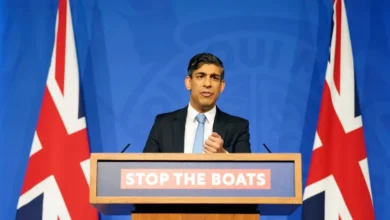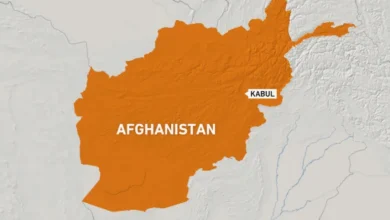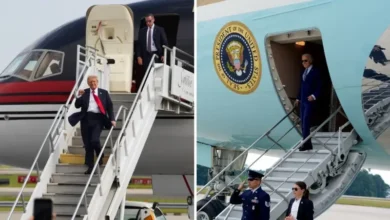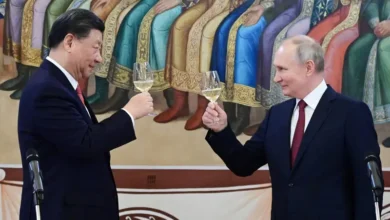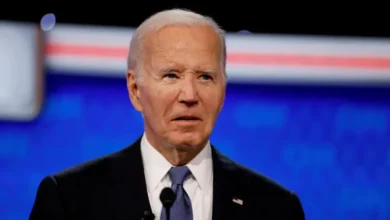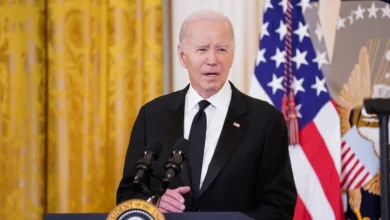Before Gershkovich: Big prisoner swaps between enemies
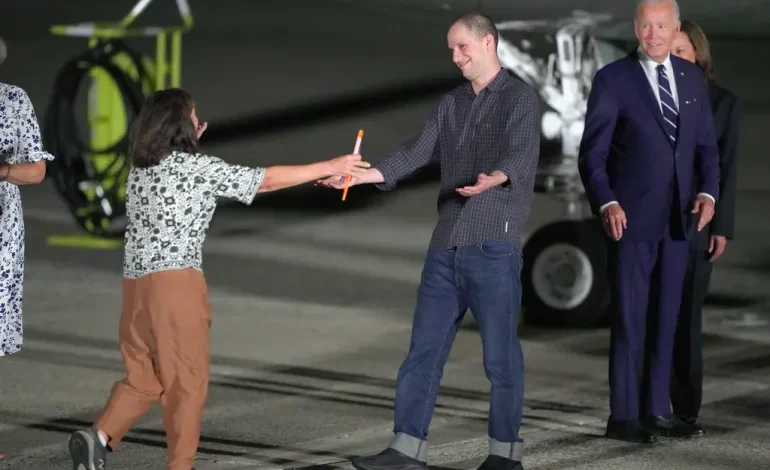
This week’s prisoner exchange between Russia and the West was a historic moment, the largest swap in post-Soviet times, involving 24 prisoners.
Behind-the-scenes negotiations had intensified in recent months with tricky concessions required by the United States, Russia, Germany and three other European nations as international tensions over the war in Ukraine peaked.
US President Joe Biden called the Ankara-brokered deal a “feat of diplomacy”.
Russia released 16 people, including US citizens Evan Gershkovich, a reporter with The Wall Street Journal, and Paul Whelan, a security executive and former marine.
In return, the West allowed eight prisoners to return to Russia, including Vadim Krasikov, sentenced to life in prison by a German court in 2021 for killing a former Chechen rebel in Berlin – allegedly on Moscow’s orders.
Does the swap augur a thawing of relations between Russia and the West, in particular over the former’s war on Ukraine? Not likely.
Asked if the negotiations with Moscow laid the groundwork for peace talks, US National Security Adviser Jake Sullivan said the White House did not see a link between the two interactions.
As can be seen in our recap of the biggest prisoner trades in recent history, disparaged by some as “hostage diplomacy”, swaps can often pave the way for future releases, but their significance is more often than not limited.
February 1962 | ‘Bridge of Spies’
The first major prisoner exchange between the Soviet Union and the US took place at the height of the Cold War on Glienicke Bridge, aka the “Bridge of Spies”, which is on the edge of Berlin and had marked the border between East Germany and West Berlin.
The deal saw KGB spy Rudolf Abel walk towards East Germany, crossing paths with US pilot Francis Gary Powers on his way to the West.
May 1985 | The Jibril Agreement
The Jibril Agreement between Israel and Palestine was named after Ahmed Jibril, leader of the Popular Front for the Liberation of Palestine-General Command (PFLP-GC).
Nearly a year in the making, this deal saw three Israeli soldiers who had been seized by the group in Lebanon exchanged for 1,150 prisoners – including Kozo Okamoto, a member of the Japanese Red Army (Nihon Sekigun) who participated in the 1972 Lod Airport (Ben-Gurion International Airport) attack.
While Jibril was a landmark agreement, it was by no means the biggest.
Just two years before, Israel had exchanged more than 4,500 Palestinian prisoners for six Israeli soldiers held prisoner by the Palestine Liberation Organization.
June 1985 | The biggest agent swap
This biggest trade of government agents in history takes us back to the Glienicke Bridge.
July 2010 | The ‘Illegals Program’ swap
In 2010, 10 Russian agents detained by the US were swapped for four prisoners held in Russia.
The Russian agents were part of the so-called Illegals Program, a sleeper agent network launched by Russia’s Foreign Intelligence Service during the Cold War and revived by Russian President Vladimir Putin.
Unmasked by the FBI, members of the group included Anna Chapman, who had been working undercover in Manhattan real estate and who later attained celebrity status in her native Russia.
